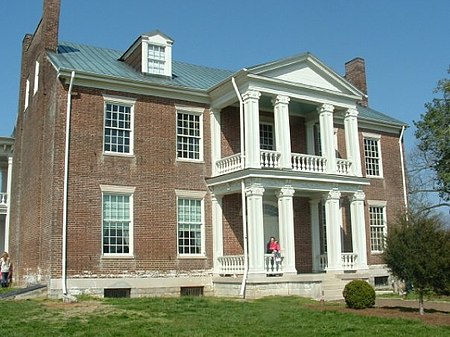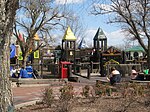Carnton
American Civil War hospitalsAntebellum architectureFederal architecture in TennesseeGreek Revival houses in TennesseeHistoric house museums in Tennessee ... and 9 more
Houses in Franklin, TennesseeHouses on the National Register of Historic Places in TennesseeMcGavock family residencesMuseums in Williamson County, TennesseeNational Register of Historic Places in Williamson County, TennesseePlantation houses in TennesseeSlave cabins and quarters in the United StatesTennessee in the American Civil WarVague or ambiguous time from June 2011

Carnton is a historic home and museum in Franklin, Williamson County, Tennessee, United States. The plantation played an important role during and immediately after the Battle of Franklin during the American Civil War. It is managed by the non-profit organization The Battle of Franklin Trust.
Excerpt from the Wikipedia article Carnton (License: CC BY-SA 3.0, Authors, Images).Carnton
Carnton Lane, Franklin
Geographical coordinates (GPS) Address External links Nearby Places Show on map
Geographical coordinates (GPS)
| Latitude | Longitude |
|---|---|
| N 35.90309 ° | E -86.85834 ° |
Address
Carnton Plantation
Carnton Lane
37064 Franklin
Tennessee, United States
Open on Google Maps








